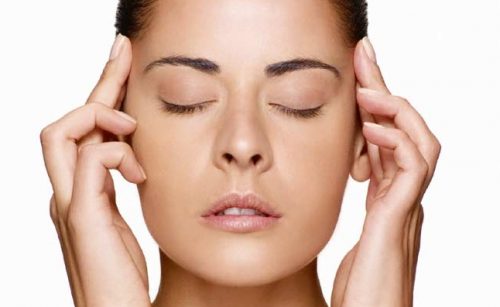7 Easy Eye Exercises For Visual Fatigue and to Avoid Headaches


Written and verified by psychologist Valeria Sabater
Did you know that headaches can often be related to your eyes? What if we told you that all it would take to relieve that headache was to do these 7 eye exercises throughout the day to counteract and avoid this discomfort?
Sometimes we don’t even notice it, but visual fatigue resulting from using computers or intense focus on something for a long period of time can have many consequences, some of which we may not even be aware of.
It’s happened to all of us at some time. We get home and have to resort to taking a painkiller to relieve a headache.
Take note of these eye exercises for your vision.
Eye exercises for visual fatigue
1. Exercise with the palm of your hands

- Sit down and close your eyes. Breathe deeply for one minute.
- Rub the palms of your hands together vigorously until they warm up, and then place them softly over your eyelids.
- Feel the warmth transferred from your hands to your eyes and eyelids in the middle of the darkness.
- Repeat this process 3 times: close your eyes, breathe and rub the palms of your hands together, then place them on your eyelids.
2. Blink
Did you know that when we are in front of a computer our eyes forget to blink as often as needed?
The brain is overstimulated and gives priority to hydrating the eyes. From there redness sets in, and then comes the headache.
Take note of what you should do:
- Sit down with your eyes open.
- Blink 10 times rapidly.
- Now, close your eyes for 20 seconds. Breathe deeply.
- Repeat this exercise 5 times.
3. Left to right movement

- Sit down and extend one arm, keeping your fist closed while at the same time lifting your thumb, pointing it upward.
- Focus on that point of your finger for 10 seconds.
- Now, slowly move your arm to the left, and follow that movement with your eyes.
- Next, move our arm in the opposite direction, to the right.
- Repeat these movements 5 times in each direction.
- After completing this exercise, close your eyes for 3 minutes.
4. Up and down
- Sit with your back straight and your knees together.
- Place your fists on your knees.
- Now lift your right thumb little by little, until it is at eye level. Then, lift it to your head. Now lower it.
- Repeat with the other arm.
- Lastly, close your eyes and relax.
5. Focusing on the point of your nose
This exercise is done only once. It would not be good to repeat it because you run the risk of fainting.
- Sit in a comfortable and safe position, place your thumb on the point of your nose.
- Focus on that finger until both eyes are looking at the same point.
- Now move your finger away from your nose moving it forward.
- Relax your gaze and close your eyelids for 20 seconds.
6. Take your eyes for a long walk
We spend a great part of our day with our vision focused on short, limited and restricted distances. That is what causes over-strain and extreme visual exhaustion.
We should be very conscious of this and understand that we should dedicate 10 minutes per day to this easy and relaxing exercise.
- Stand in front of an open window and let your gaze follow the horizon to its farthest point. Do this for 2 minutes.
- Now, focus on the point of your nose and then return your gaze to the distant horizon.
- Blink rapidly several times.
- Relax.
Also read:
7. Massage your temples

- Sit with your back straight.
- Breathe deeply. Inhale for 6 seconds, hold for 7, and exhale for 8 seconds.
- Now, with your index finger and middle finger of each hand, massage your temples for two minutes.
- Relax with the exercise.
Also check out:
In conclusion, as you have seen, these eye exercises are very simple. However, in their simplicity is the hidden reality of a clear and direct benefit to the health of our eyes.
Start doing it daily. Your head, vision, and well-being will notice the difference.
All cited sources were thoroughly reviewed by our team to ensure their quality, reliability, currency, and validity. The bibliography of this article was considered reliable and of academic or scientific accuracy.
Quinn, C., Chandler, C., & Moraska, A. (2002). Massage therapy and frequency of chronic tension headaches. American Journal of Public Health. https://doi.org/10.2105/AJPH.92.10.1657
Randolph, S. A. (2017). Computer Vision Syndrome. Workplace Health and Safety. https://doi.org/10.1177/2165079917712727
This text is provided for informational purposes only and does not replace consultation with a professional. If in doubt, consult your specialist.








